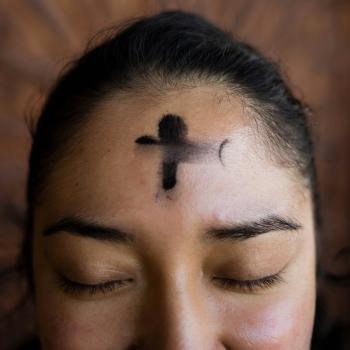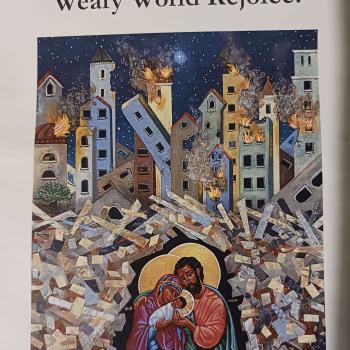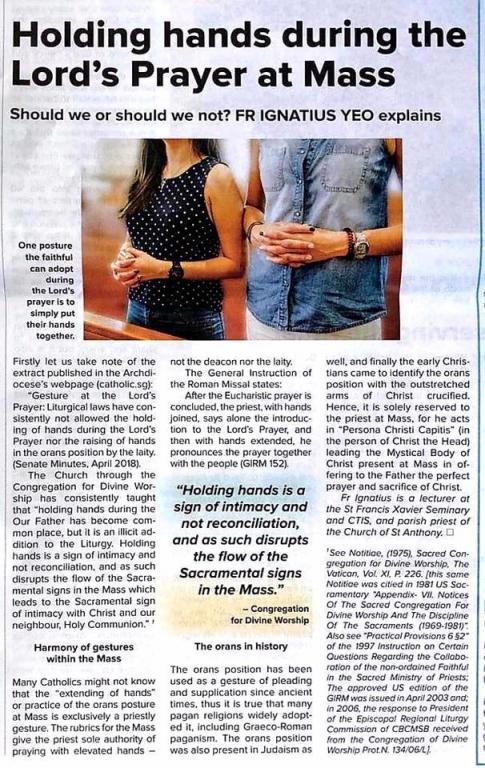Two bishops, Most Rev. Thomas J. Olmsted and the Most Rev. Robert C. Morlino, the bishops of Phoenix, Arizona and Madison, Wisconsin, have recently decided it is time to limit the reception of the species of wine at the liturgies within their dioceses. They have the authority to do this, and, when they enact such a discipline, the faithful in those dioceses should follow it. However, this does not mean the faithful under the guidance of these bishops cannot question whether or not such a discipline is needed, and explain why they think their bishop might want to reconsider their decision.
We are given a variety of reasons why this reservation of the chalice is seen as necessary (such as in this explanation by Bishop Morlino): it will prevent liturgical abuse, it will help normalize liturgical celebrations with celebrations outside of the United States, that the faithful are not being catechized well enough to understand eucharistic theology, and that there is not a solid enough reverence to the eucharist. Of course, the authority of the bishop to make this decision is also being reinforced, in case that was in question.
Now, what kinds of liturgical abuses are being considered as making it necessary for the elimination of the chalice from the people?
Some suggest it is the proliferation of eucharistic ministers, that they are supposed to be extraordinary ministers – however, the same people will look at the extraordinary use of the Latin Rite and want it to be used as much as possible. This shows that they really know that the term “extraordinary” does not, in itself, indicate the concept of “less is better. Is there the possibility of some spilling going on? Perhaps, but is this the only way to deal with it? What about crumbling of the eucharistic bread? Since that, too, can happen, would we also suggest the reservation of the eucharist itself and return to infrequent communion (actually a case could be made for this, based upon history as well, but this is something which is not being considered, even if it would be the most logical answer to this problem). What about the claim of the normal, universal practice? Clearly, the bishops are looking only within the domain of the Latin Rite, because the Eastern Churches give both species to their communicants. And, when we have had Blessed John Paul II suggest the West needs to learn to learn from the East and gain from the Eastern practices, when exploring disciplines, the East should be examined and not ignored. As for catechesis, the elimination of the chalice could actually be detrimental to future theology, not to its benefit, because it encourages a “as little as necessary “ attitude towards spiritual gifts. What kind of spiritual life would that provide someone? Do as little as necessary to be saved? What about the promotion of extraordinary sanctity? Would that not be lost? This argument also ignores the symbolism inherent with the liturgical celebration, leading to a possible gnostic response (this point I think is the most significant criticism one can give; when there is no actual cultural-theological problem being addressed, the discipline can work contrary to its intention; historically, there was a specific theological problem addressed which led to the discipline in the middle ages, but do we see that problem today? Is it being identified today? No). Lastly, the issue of eucharistic devotion – once again, when the symbolism of the eucharist is lacking, how can the devotion improve? Proper devotion must include a proper understanding of the whole liturgical celebration, of the purpose of communion. Without it, such devotion ends up gnostic and divisive.
Let us look the eucharist, and why theology says Jesus established communion with two species, not one. Peter Lombard addresses this question in The Sentences:
But why is it taken under a double species, since the whole Christ is in either of them? In order to show that he took the whole human nature so that he might redeem it whole. For the bread is referred to the flesh, the wine to the soul; because wine becomes blood, in which the seal of the soul is said to be by the natural philosophers. And so it is celebrated in two species so as to signify the taking of soul and flesh in Christ, and the liberation of both of them in us. [1]
The double species presents to us the fullness of the incarnation, that the Logos assumed the whole of the human nature and was man; he was not just God in a man-suit, he was fully man, with a human soul, so that the whole person, body and soul can be saved. The eucharist, in its performance and reception, tells us Christ saves us body and soul, and indeed, protects us in body and soul:
And yet what is effective for both is received under either species because the whole Christ is received under either species. But if it were received only in one, its effectiveness as protection for both body and soul equally would not be signified, but only for one.[2]
Without some necessity for a discipline which runs counter to the way Jesus performed the mystical supper, the symbolism of the eucharistic celebration is meant to provide is lacking when only one species is offered to the laity. And symbolism is very important; proper symbolism is necessary for a proper understanding and appreciation of communion. Symbol is not some extra, but rather, it is part and parcel with the sacrament itself, and to disassociate the symbol from the sacrament is as antithetical to the sacrament as trying to separate the physical matter from the sacrament. It leads to a de-emphasis of the value of creation, and an imperfect understanding of Christ’s work in the world – a work which is cosmological and for the whole of creation, as Alexander Schmemann rightfully points out:
If, for the Fathers, symbol is a key to sacrament it is because sacrament is in continuity with the symbolic structure of the world in which “omnes . . . creaturae sensibiles sunt signa rerum sacrum.” And the world is symbolical – “signum rei sacrae” – in virtue of its being created by God; to be “symbolical” belong thus to its ontology, the symbol being not only the way to perceive and understand reality, a means of cognition, but also a means of participation. It is then the “natural” symbolism of the world – one can almost say its “sacramentality” – that makes the sacrament possible and constitutes the key to its understanding and its apprehension. If the Christian sacrament is unique, it is not in the sense of being a miraculous exception to the natural order of things created by God and “proclaiming His glory.” Its absolute newness is not in its ontology as sacrament but in the specific “res” which it symbolize,” i.e., reveals, manifests, and communicates – which is Christ and His Kingdom. But even this absolute newness is to be understood in terms not of total discontinuity but in those of fulfillment. The “mysterion” of Christ reveals and fulfills the ultimate meaning and destiny of the world itself.[3]
Creation is symbolic and it is because it is symbolic it is able to merge with the grace of God and become sacramentalized. God works with nature, not against it. God works with the natural symbolic nature of creation in order to bring to us Christ in the eucharist. The necessity of bread and wine comes from the symbolic nature of bread and wine, body and blood. The lack of understanding of the eucharist comes out of a lack of understanding the symbols; the solution is not to eliminate the symbols, but to help us return to a vision of the world where symbol has value. The solution is not to disconnect the world from grace, in a gnostic dualism, but to bring them together and show the way the two work together. To appreciate the eucharist, the sacrament of sacraments, we must appreciate the symbols, not ignore them. We must also see how the eucharist is meant for communion; the symbolic nature of the bread and wine presents to us two forms of unity, the sharing of body and blood together which is necessary for us to be of one body, the Body of Christ. Both symbols together bring us to better appreciate communion, not lessen it. “The way of catholicity of the Church is revealed in the eucharistic community shows that the ultimate essence of catholicity lies in the transcendence of all divisions in Christ.”[4] How can this catholicity be shown, however, when we continue to try to find a way for eucharistic division? Disciplines, while being necessary for a time, can and do limit the symbolic value of liturgical celebrations, but when the discipline is not necessary, the richness of the original symbolism meant for communion by Christ himself is best to be brought forward and encouraged.
When a crisis is apparent, when eucharistic understanding is lacking, the worst thing one can do is to diminish the symbols, because that will reinforce such a misunderstanding. And if the understanding is lacking, should we not be surprised devotion to the eucharist, proper reverence to communion is also lacking? There might be a legitimate crisis that the bishops are trying to curtail. However, the solution is a reinforcement of the symbols of the mass, not the diminishing of their use for the laity. Anything else will just reinforce a gnostic, unincarnational theology, the kind of theology which ends with the elimination of the eucharist as a whole. Is this not what we saw once before in the West?
[1] Peter Lombard, The Sentences Book 4: On the Doctrine of Signs. Trans. Giulio Silano (Ontario: Pontifical Institute of Medieval Studies, 2010), 58.
[2] Ibid., 58.
[3] Alexander Schmemann, For the Life of the World (Crestwood, NY: St Vladimir’s Seminary Press, 2002), 140.
[4] John D. Zizioulas, Being as Communion (Crestwood, NY: St Vladimir’s Seminary Press, 1997), 162.












